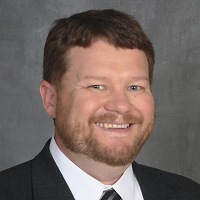Challenges of Battery Energy Storage Systems (BESS)
Challenges of Battery Energy Storage Systems (BESS)

Utility-scale solar is gaining momentum with installed cost drops and environmental and regulatory attractiveness. Utility-scale batteries are being added to solar and wind to address the intermittency of renewable technologies. This presentation will look at challenges in scaling the battery applications to larger and longer durations. A key challenge in scaling BESS to utility applications is managing the specifics of the DC systems. When using Li-Ion technology, DC fault currents can approach unreasonable levels, in many cases exceeding equipment ratings. This discussion will focus on solutions and mitigation techniques that can be used in scaling battery projects to desirable levels.
I see a bright future for BESS, with applications today at distribution levels with current technology, but moving into electric transmission (> 69 kV) applications as the technology develops. To allow battery storage to have a major impact to change the way we look at electric power, we need battery systems to scale to sizes and durations that meet our needs. The methods discussed here will allow us to develop BESS technology and fundamentally change how power systems operate.
Date and Time
Location
Hosts
Registration
- Date: 12 Feb 2021
- Time: 08:00 PM UTC to 10:00 PM UTC
-
 Add Event to Calendar
Add Event to Calendar
- Contact Event Host
-
Webex link will be sent via email 1-day prior to each event.
Speakers
 Ian Hutt
Ian Hutt
Challenges of BESS
Utility-scale solar is gaining momentum with installed cost drops and environmental and regulatory attractiveness. Utility-scale batteries are being added to solar and wind to address the intermittency of renewable technologies. This presentation will look at challenges in scaling the battery applications to larger and longer durations. A key challenge in scaling BESS to utility applications is managing the specifics of the DC systems. When using Li-Ion technology, DC fault currents can approach unreasonable levels, in many cases exceeding equipment ratings. This discussion will focus on solutions and mitigation techniques that can be used in scaling battery projects to desirable levels.
I see a bright future for BESS, with applications today at distribution levels with current technology, but moving into electric transmission (> 69 kV) applications as the technology develops. To allow battery storage to have a major impact to change the way we look at electric power, we need battery systems to scale to sizes and durations that meet our needs. The methods discussed here will allow us to develop BESS technology and fundamentally change how power systems operate.
Biography:
Mr. Hutt is experienced in project management and electrical power systems. He specializes in relay protection engineering, coordination, arc flash analysis, short circuit analysis, transmission planning, electromagnetic field analysis, and automatic generation control using CAPE, ASPEN, CYME, PSCAD, EMTP-RV, ETAP, SKM Power Tools, EasyPower, CDEGS, AcSELerator QuickSet, PowerBase, PSS/E and TRANSMISSION 2000®. He is a member of the Commonwealth Renewable Energy Team and is an industry published leader and expert in renewable technologies, particularly solar, BESS and microgrids. Ian has been active in IEEE since 2005, and has held various positions including volunteer coordinator for the 2011 PES GM, SEM PES Chair and SEM YP Chair.
Agenda
Schedule:
Date: February 12, 2021
Place: Virtual using Webex
Time: 3:00 pm EST/EDT (login at 2:45 pm EST/EDT)
2:45 to 3:10 pm: Introductions, networking
3:10 to 4:00 pm: Main topic/Speaker Iain Hutt
4:00 to 4:45 pm: Discussions, Q&A
4:45 to 5:00 pm; Wrap up, Conclusion
Hosted in co-operation with CS, Edu Soc, PES SE Michigan and Florida West Coast Sections. PDH is available only after you attend the event and request it via email, alternatively you can request it via the chat feature during the session.
Media
| BESS event flyer 02-12-2021 | BESS event flyer 02-12-2021 | 121.38 KiB |
